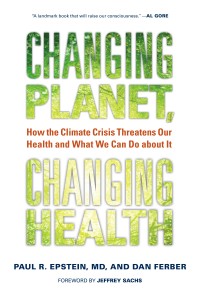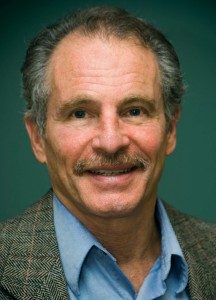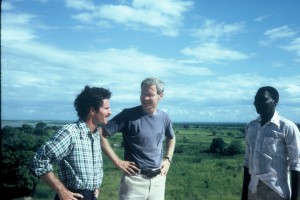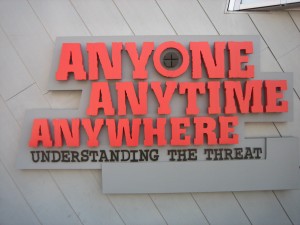![]() The international Aquarius/SAC-D satellite was successfully launched yesterday (thankfully!). Media coverage was good – except for the almost absolute avoidance of the term ‘salinity’ to describe the concentration of salts in the surface ocean that Aquarius will retrieve – oh well. But what is Aquarius going to see, and why is it important?
The international Aquarius/SAC-D satellite was successfully launched yesterday (thankfully!). Media coverage was good – except for the almost absolute avoidance of the term ‘salinity’ to describe the concentration of salts in the surface ocean that Aquarius will retrieve – oh well. But what is Aquarius going to see, and why is it important?
[Read more…] about The age of Aquarius
Climate Science
Unforced Variations: June 2011
Unfinished Business
A paper in the scientific literature has to have some minimum level of content to be worth publishing (and regrettably, the search for the ‘Least Publishable Unit’ (LPU) of work is occasionally apparent for those wishing to pad their CVs). But what happens when someone has something worth saying that falls below that level? This is might be an update to an earlier paper, with modifications to figure, one extra sensitivity test, or some other minor addition, that could be of interest to readers of the original, but it doesn’t really get to the point where one would write a whole new paper. Some new journals (such as Geoscientific Model Development, GMD) have set up mechanisms to provide versioning of papers so that small updates can be made relatively easily, but this is rather uncommon.
A common reason to want to add additional material is in the light of subsequent commentary. In the usual case of an official submitted comment, the required response provides a good opportunity to give further details, add justification, or even agree with the comment (this last one doesn’t happen very often, but it does occur). Comments are often hard to publish for all sorts of non-scientific reasons, see Rick Trebino’s appalling story for instance, and note GRL’s 2010 decision to stop accepting comments altogether. Unfortunately not all comment/response pairs that do get published are worthwhile, but I still think they can be useful.
Where criticism occurs on a blog, there is no necessity to respond (as there would be for a submitted comment), but it is possible that there is something worth addressing (not everything is of course). Responses posted to that material – either in blog comments or in other blogs are however a little unsatisfying since the blog commentary and response are not tied to the actual paper (though mechanisms like that used by ‘Research Blogging‘ or JournalTalk could conceivably be used), and can quite frequently spiral out of control (with additional criticisms, responses, and often vast amounts of irrelevant commentary). As a useful archive of a discussion, this leaves much to be desired, nonetheless, the determined reader can usually find some nuggets.
But there is a third case where the comment/response effectively never sees the light of day. For a number of reasons critics will sometimes decide not to submit a comment, but rather a whole new paper. This might be because they want to include more information than a comment would allow or are making a comment on a previous work as part of a larger paper. Or it might be that they (correctly) note that comments are not as useful on the CV as a ‘proper’ paper, or indeed, a journal does not want to accept a comment for some reason. Less nobly, comments are sometimes avoided to try to prevent the original authors from having the last word. However, there is a risk that this paper never gets published at all (perhaps because it has less than one LPU, or it isn’t very good, or it clearly nothing more than a comment on a previous paper, or the authors lose enthusiasm). In that case, the criticism, and any response to it from the original authors (if they were asked to respond), simply disappears from sight. While possible, in my experience it is very rare that the critics then turn back to the official comment route.
It is very unusual for any scientific paper to the last word on anything, and there are almost always things that, in retrospect, one would have done differently. So it is not surprising that questions get raised through all this that the original authors might want to tackle without themselves submitting a whole other paper. Theoretically most papers would benefit from a well-refereed post-publication commentary. Yet, without a formal mechanism to shepherd this process, this material generally falls through the cracks.
As readers might have surmised, this is leading up to something.
Two papers that I was an author or co-author on in recent years generated a fair amount of blog commentary – Schmidt (2009) in IJoC and Benestad and Schmidt (2009) in JGR – mostly because they were explorations of issues raised by authors critical of the mainstream view of climate science. Despite the blog discussions, however, in neither case was a comment/response pair published. A comment was submitted on Schmidt (2009) by Jos de Laat, but this did not pass peer review (rightly I think) and no more has been heard of it. In both cases however, other authors whose work was criticised (specifically Ross McKitrick and Nicola Scafetta) submitted new papers to the same journal that were effectively just extended comments. A couple of valid points were made, but much in the draft texts was either wrong or irrelevant. I was asked to respond to both submissions by the editors involved, and did so in the form of a signed draft response as if the papers had indeed been submitted as comments. In both cases however, the papers were eventually rejected. A similar paper by McKitrick and Nierenberg appeared in another journal, while Scafetta’s paper has not been seen again.
So why bring this up now?
The fact is well-crafted comments and responses on both these papers would have been a useful contribution to the literature, and it is a shame that this didn’t happen (as I stated in at least one of the responses). That the authors were unwilling to submit ‘just’ a comment for whatever reason is part of the story (but it is not clear that any actual comment would have stuck to the points I thought worth making, or that the comment/response would have passed peer review either). But both papers have been mentioned recently in various contexts and it was apparent that the conversations might have been at least a little more interesting if the at least some of the unpublished correspondence on the papers had been available.
It strikes me that these are unlikely to be unique circumstances (or at least I would be very surprised if this kind of thing hasn’t happened to other people). So is there interest in RC providing space for these kinds of discussions? Authors, with something extra to say that they don’t ever think they’ll put in a new paper, could add some extra analysis and tie up some of the loose ends. I’d be happy to start the ball rolling by dealing with some issues relating to the papers mentioned above, but is this something else anyone would care to do? Should we instead be advocating for a rapid reaction online journal specifically for worthwhile comments and replies, especially since some journals have stopped accepting them? Thoughts welcome.
An incremental step blown up
New results from the University of Aarhus in Denmark and the Danish National Space Institute allegedly show that particles from space create cloud cover, according to a recent press release. And the Physics World magazine (May, 2011) report that the
researchers say this is the best experimental evidence yet that the Sun influences the climate by altering the intensity of the cosmic-ray flux reaching the Earth’s surface.
Quite spectacular claims! So let’s see what is the source of this information.
The basis for the statements was a recent paper published in GRL by Enghoff et al. The key points in the paper are stated as: (a) Cosmic rays increase nucleation rate, (b) A particle beam is not needed, for experiments, and (c) Ions are important for atmospheric nucleation rate. But where is the link to real clouds?
Health on a Changing Planet
by Jim and Rasmus
NOTE: The authors of the book are following this post. If you have questions on this broad topic, ask them!
In the big, wide-ranging world of global change effects, one would be hard pressed to find a topic that is more important–or of more interest to more people–than effects on human health. And in science, one can sometimes also be pressed to find books that smoothly integrate technical knowledge with the experiences and needs of human beings.
So, when you have someone with a lifetime of hands-on experience and academic training in international environmental health, describing the actual and potential impacts of global changes on the health of individuals, societies, and ecosystems, then you have something well worth paying attention to. This is certainly the case with Changing Planet, Changing Health, a new book from the University of California Press, authored by Paul Epstein and Dan Ferber, physician and writer, respectively. Written for a general audience, it deals with a number of current, and potential future, effects of global change—with an emphasis on climate change–on various health-related issues.

Senior author Paul Epstein has a strongly holistic/synthetic health perspective. Accordingly, the book is very wide ranging topically, covering issues from the discovery of the puzzling roots of cholera’s epidemiology, to the effects of large storms on the behavior of the insurance industry, to the social disruptions arising from hurricanes and warfare, to the roots of the problems with the global economic system–and much in between. The book does an outstanding job of connecting many otherwise disparate issues. These topics are all described in simple prose–there are no mathematics or model expositions, few acronyms and little jargon, etc. For these and other reasons, this book is an important and accessible contribution that many will want to read, and which many others really should.
Many of the discussions depict scenarios that are already happening, or could happen in the future, not necessarily what is likely to happen. That is, they provide examples of some possible effects, not an exhaustive attribution-oriented discussion of cause and effect, nor a model-based attempt to weigh future likelihoods of occurrence. The book is structured around chapters which integrate a particular climate change element’s effect on one or more health issues, often involving a personal story of some type. These situations include, for example, the discovery of the changing epidemiology of malaria in East Africa, crop disease and insect attacks in the United States, and the plights of the poor in Honduras.

This synthetic viewpoint stands in contrast to the narrower, reductionist perspective which permeates much of current medical science (or perhaps science in general). Accordingly, there is a short synopsis of the systems theory perspective in biology that was a central concept of the seminal work of Ludwig von Bertalanffy in the mid-20th century. It is also not surprising that the book extends the human health theme to the broader topic of system health in several places. In fact, two of the 13 chapters specifically address ecosystem stability issues, using disruptions of marine and forest ecosystems as examples, topics which may or may not have obvious ties to human health issues.
Relatedly, the book returns at several points to the general concept of cumulative effects. This first appears in a discussion of how ecologist Richard Levins of the Harvard School of Public Health influenced Epstein’s thinking on public health. It shows up later in discussions of the similar ways that plant and human pathogens’ virulence depend on the base health state of their hosts. This leads directly into a discussion of the spread of soybean rust throughout the world in the late 20th century, with its potential to greatly reduce yields and hence affect human food supplies. The idea returns yet later in discussions of the ongoing, multiple health stresses experienced by the rural poor in Honduras, making them less able to handle the effects of any additional stresses, such as those resulting from environmental disasters like Hurricane Mitch in 1998. This latter case speaks more generally to the susceptibility of the poor in general.
There are also discussions of potential surprises. For example, they describe the unexpectedly high amounts of beetle herbivory in soybeans in response to elevated atmospheric carbon dioxide, as evidenced by FACE experiments. Another example discusses ragweed pollen, a very important hay fever and asthma allergen. They describe research showing that the quantity of ragweed pollen produced in doubled CO2 environments is increased significantly (61 percent), not because of large increases in size (~ 10 percent) but rather (apparently) due to a changing internal allocation of resources. Life history characteristics of the genus might reasonably predict this result, and there are many factors in the real world that could alter it. But it still serves as a useful example that could otherwise fly completely under the radar.
While the use of ecosystem complexity to illustrate the potential for surprises is certainly valid, it can also be a double edged sword. There will very likely be surprises that have unexpectedly positive results as well, and the overall balance between positive and negative is highly uncertain. My (Jim) one criticism is that I would like to have seen this this point made, with reference to experimental or model results. The plant ecology and/or agriculture discussions would have been a good place to do so, given the complexities/uncertainties involved. The authors’ strongest points are arguably those dealing directly with well-defined and direct human health concerns having demonstrated relationships with well understood climate dynamics.
Several important points of the book relate to biological thresholds. These are ubiquitous in biology at all scales and are illustrated nicely in several places; a particularly good example is the effect of temperature changes on malarial epidemiology. Malaria is caused by species of single-celled parasites in the genus Plasmodium, vectored by mosquitoes primarily in the genera Aedes and Anopheles between many vertebrate hosts, including humans. Debilitating to lethal in effects, the disease also comprises a fascinating scientific story. This includes for example, the effects of weather/climate on the population dynamics of rapidly reproducing, cold-blooded organisms, and the epidemiology of disease spread (and interesting textbook cases in genetics and evolution as well).

Epstein and Ferber describe how small changes in temperature can lead to large changes in malarial dynamics. This is a function of both insect and parasite life cycle development time–both of which are typically non-linear. These in turn have non-linear effects on malarial epidemiology, via changing spatial patterns of temperature and precipitation combined with the spatial pattern of human populations and the genetic resistance to malaria therein. So, full Plasmodium falciparum development that takes 56 days at 18 degrees C, but only 19 days at 22 degrees, has very significant implications for a mosquito host that lives only 3 weeks maximum: it allows the full development of malarial parasites which are not possible at the lower temperature. The insect population dynamic also matters, which in an aquatic breeder like mosquitoes, will be a function of both temperature and the existence of water reservoirs having a 3+ week lifetime, which in turn are a function of precipitation intensity and frequency. Insect population threshold effects are also discussed in a later chapter devoted to the topic of tree mortality and bark beetle dynamics in western North America.
The forest that really should not be missed for the trees here, is the importance of these non-linear dynamics in response to climate change. Considering that many biophysical systems are webs that are considerably more complex than the examples provided, it takes little imagination to realize the potentially high levels of unpredictability that are quickly reached. And this should give any reasonable person–and society–concern about the consequences of forcing the climate into a state that is without precedent in modern society. Science is difficult enough when equilibrium states are the study focus, let alone when strongly forced and thus, transient.
Environmental health also includes non-biological stressors, such as environmental chemicals, food, water and air quality, social upheavals, etc. Epstein and Ferber address these broader issues as well. For example, one chapter is devoted entirely to air quality/composition and its effects on a wide ranging and chronic disease, asthma. They also recognize that global change is not just climatic. They describe, for example, the multiple causes of health effects in places like Honduras, resulting from the combined effects of mangrove clearing and shrimp farming, gold mining, El-Nino changes, and hurricanes, each contributing its part to an unhealthy and unsustainable condition.

The book is also not shy about engaging controversial topics or discussing the disinformation campaign. For example, Kenyan malarial epidemiologist Andrew Githeko was targeted a decade ago after his model-based predictions of the spread of malaria into the highlands of East Africa, where it is currently expanding but was historically absent due to the temperature limitations that altitude brings. Several of the tactics of denial that are well known to RC readers, are discussed. Nor are the authors afraid to discuss issues in the socio-political world that drive many of the human behaviors that are leading to climate change as well as the unequal suffering that will be experienced due to inequalities in wealth. And neither are they reluctant to address the multiple social and environmental costs of fossil fuels, such as coal. Once trained in making connections across disciplines, well, the habit tends to express itself.
In the discussions of climate per se, there are a few minor inaccuracies in an otherwise sound discussion of what is known. However, none of these has any bearing on the bigger picture portrayed. For instance, the book discusses the (essentially non-existent) effect of El Nino Southern Oscillation on the Gulf stream; it is possible that the authors actually had the ocean currents off the Peruvian and Equatorial coasts in mind. There is also a misconception in the book’s introduction about the strength of a greenhouse and the thickness of the glass panes, but this does not translate to the greenhouse effect. This is, however, noted later in the book, so the inconsistency is just a glitch. The book also asserts that global warming will lead to more storms, which is still a disputed issue. The situation regarding glaciers on Mt. Kenya is probably more complicated than just a question about temperature – changes in precipitation pattern will also affect their mass balance.
The authors are critical towards certain multinational corporations, discussing for example the role of ‘economic hit men’ (e.g. John Perkins). And although the book covers many topics, it does not discuss population growth, and it touches on communication issues only lightly in discussing why the world has so far failed to act on climate change. This is somewhat ironic, given that the book is one of the best examples we have yet seen regarding the effective communication of climate change issues. It suffices to mention “Climategate”, “Wikileaks”, and social networks (in recent developments in Northern Africa) to understand the power of information/disinformation and communication, in molding public opinion.
The book also mentions Norway as a shining example regarding the tackling of climate change, but the world is more nuanced; Norway also pushed for more oil drilling in the Arctic, and is involved in tar sands in Canada, as well as oil exploration in Libya. Also, much of the surplus that Norway gains from pumping oil is invested into the same kinds of corporations as those Epstein and Ferber describe as part of the problem.
But there is much more to be learned from the book than just the various technical issues discussed. Just as important is the very evident concern with human welfare and justice; these have clearly motivated a very large part of Epstein’s life work, as well as several of those discussed in the book. One particularly good example is the rather amazing story of the Honduran doctor Juan Almendares and his lifelong dedication to the welfare of rural and/or marginalized people there. The importance of this human aspect in solving the impending global climate change problem is most certainly not to be overlooked, and it in fact forms a kind of subliminal undercurrent upon which the various technical discussions in the book all ride.
Paul Epstein and Dan Ferber have created in this book an outstanding synthesis of climate change and human/environmental health concerns. It is born of a lifetime’s work, and addresses topics that will potentially affect a very large number of people. This is a great and needed contribution and we recommend it without reservation.
Unforced variations: May 2011
This month’s open thread.
Seed topics: The genealogy of climate models, how to compare different greenhouse gases, whether a 2 deg C temperature target makes sense (Stoat has already weighed in), or reflections on the Nenana Ice classic (which has just concluded for this year). But you decide.
Handbook in Denialism
 It would not surprise me if the denialists would deny the existence of the new book by Haydn Washington and John Cook (skepticalscience.com) ‘Climate Change Denial: Heads in the Sand‘. Somehow, I don’t think they will read it – but they are not target group of this book either. Anyway, denialism is, according to the book, a common human trait – we should all know somebody who deny one thing thing or another.
It would not surprise me if the denialists would deny the existence of the new book by Haydn Washington and John Cook (skepticalscience.com) ‘Climate Change Denial: Heads in the Sand‘. Somehow, I don’t think they will read it – but they are not target group of this book either. Anyway, denialism is, according to the book, a common human trait – we should all know somebody who deny one thing thing or another.
Furthermore, denial is not the same as being skeptical, either, and Washington and Cook argue it is quite the opposite. Hence, the term “skeptics” for these deniers can be described as Orwellian “doublespeak”“newspeak”.
Denial is apparently caused by our lizard brainstem. What coincidence then, when talking about fossil fuels from plants from the era of huge long dead lizards (the fossil fuels are not made of the dinosaurs), that denying evidence for anthropogenic global warming (AGW) is linked to that lizard part of the brain. So, what about using the labels ‘reptiles’ or ‘dinos’? Washington and Cook opt for ‘deniers’, and so will I hereafter.
Review of Spencer’s ‘Great Global Warming Blunder’
Guest commentary from Steve Ghan
A good writer knows their audience, and Roy Spencer knows his. There are plenty of people who would love to hear a compelling argument for why no action is needed to mitigate global warming, and Spencer’s book “The Great Global Warming Blunder: How Mother Nature Fooled the World’s Top Climate Scientists” will give uncritical readers the argument they’ve been looking for. As Sarah Palin said, “while we recognize the occurrence of these natural, cyclical environmental trends, we can’t say with assurance that man’s activities cause weather change”. That is really the essence of Roy’s argument.
[Read more…] about Review of Spencer’s ‘Great Global Warming Blunder’
Steve Schneider’s first letter to the editor
There was a time at NASA when writing a letter to the paper without your director’s permission could get you fired. And no, I’m not talking about the last Bush administration.
[Read more…] about Steve Schneider’s first letter to the editor
Fracking methane
The Howarth et al paper estimating the climatic impact of shale gas extraction by hydraulic fracturing (fracking) has provoked a number of responses across the media. Since the issue of natural gas vs. coal or oil, and the specifics of fracking itself are established and growing public issues, most commentary has served to bolster any particular commenter’s prior position on some aspect of this. So far, so unsurprising. However, one aspect of the Howarth study uses work that I’ve been involved in to better estimate the indirect effects of short-lived emissions (including methane, the dominant component of shale gas). Seeing how this specific piece of science is being brought into a policy debate is rather interesting.
[Read more…] about Fracking methane